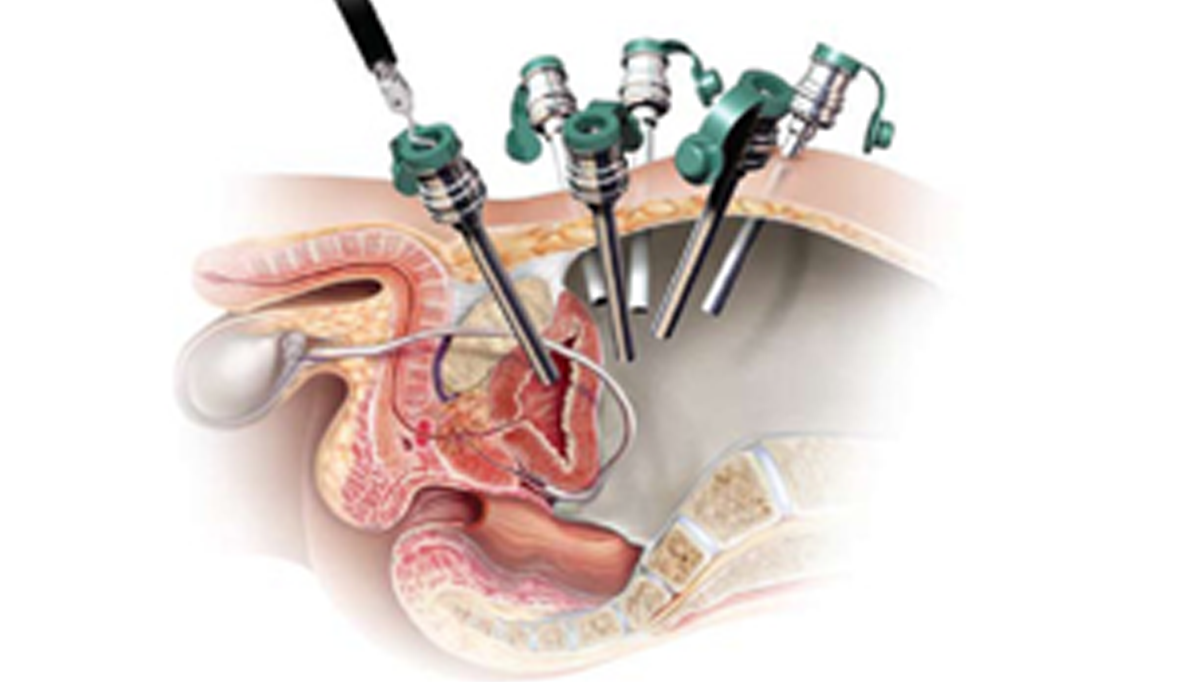Prostate Cancer Treatment in Mumbai
Prostate cancer is one of the most common types of cancer in men. Dr. Mangesh Patil provides Prostate Cancer Treatment in Mumbai.
Usually, prostate cancer grows slowly and is initially confined to the prostate gland, where it may not cause serious harm. However, while some types of prostate cancer grow slowly and may need minimal or even no treatment, other types are aggressive and can spread quickly. Until recently, men with this severe prostate cancer had few surgery choices. The only prostate surgery option was open prostatectomy, involving large incisions and post-operative side effects. Using this procedure, the entire cancerous prostate was removed with the risk of excessive blood loss, post-op infections, long hospital stays, and considerable pain. Following open prostatectomy, patient activity was limited and often resulted in a loss of bladder control and sexual function after prostate surgery due to the severance of the delicate plexus of nerves around the prostate gland. With the boon in robotic oncology traditional method faded away. Dr. Mangesh Patil provides Prostate Cancer Treatment and is a Prostate Specialist in South Mumbai and performs robotic surgeries wherever needed.
Robotic prostatectomy is a radical prostatectomy that is also known as Robotic Assisted Laparoscopic Prostatectomy (RALP). It is a minimally invasive prostate removal and cancer treatment surgery. This is ‘Da Vinci Surgical System’ in lay man’s language. It is gaining popularity as a less traumatic and minimally invasive prostate cancer treatment. Main advantages of this for patients are:

Thus, it enables surgeons to overcome many of the shortcomings of both open prostatectomy and laparoscopic prostatectomy.
Surgeon’s side:
This uses finely controlled robotic instruments to perform the prostatectomy safely, while enhancing patient recovery and outcome. Sitting at the da Vinci surgical console, doctors can performs robotic prostatectomy by controlling the device consisting of high-resolution cameras and micro-surgical instruments. Powered by state-of-the-art robotic technology, their hand movements are scaled, filtered, and seamlessly translated into precise movement of the EndoWrist Instruments.
The surgeon can even be in a different hospital, a different state or a different country on another continent, it doesn’t matter, such an operation is truly done in a remote fashion. Dr. Mangesh has done 475 independent Robotic surgeries till now.
Patient side cart:
This part of the robot provides the instrument arms that are completely under the control of the surgeon. The laparoscopic arms pivot at the 1-cm operating ports eliminating the use of the patient’s body wall for leverage and minimising tissue damage. Supporting surgical team members assist in installing the proper instruments, preparing the 1-cm port in the patient, as well as supervise the laparoscopic arms and tools being utilised whenever a robotic prostate surgery is underway.
Patient support factors:
Unlike laparoscopic surgery, da Vinci Surgical System instruments used in robotic prostatectomy can turn in all directions with 90 degrees of articulation and 7 degrees of freedom. During robotic prostate surgery the da Vinci robot provides the surgeon with improved visualisation, dexterity, and precision compared with open or laparoscopic surgery, while enabling operation through 1-2 cm incisions. During this prostate cancer treatment the patient’s delicate prostate nerves that control bladder and sexual function are spared. Greater precision of robotic prostatectomy reduces the likelihood of relapse due to missed cancerous tissue. More traditional scope-assisted surgery typically provides a much lower resolution image, and a far more limited field of vision.
Surgery is an inherently risky medical procedure. Among the more serious risks associated with surgical treatment is the possibility of infection at the incision site. Such infections are often the primary cause of serious complications which may hamper a quick and uneventful recovery. The Da Vinci system greatly mitigates the risk of infection during robotic prostate surgery. Only smaller incisions are done and these will heal significantly faster than the large incision needed in traditional surgery. The recovery time is also very less and can be determined using the system itself. Another advantage is little or no visible scarring will be there on the abdomen unlike the traditional methods. Excess scar tissue build-up can sometimes interfere with the proper function of the prostate and this is completely omitted in robotic prostatectomy.
Side effects to patients:
The rates of major side effects from robotic prostatectomy are minimal compared to traditional methods.
The most common side effects include the following:
Throughout the procedure, the surgeon controls every surgical manoeuvre. The System cannot be programmed or act in any way without the surgeon’s input to keep it as a safe set-up. Dr. Mangesh Patil is an expert Prostate Specialist in South Mumbai providing Prostate Cancer Treatment in Mumbai.


